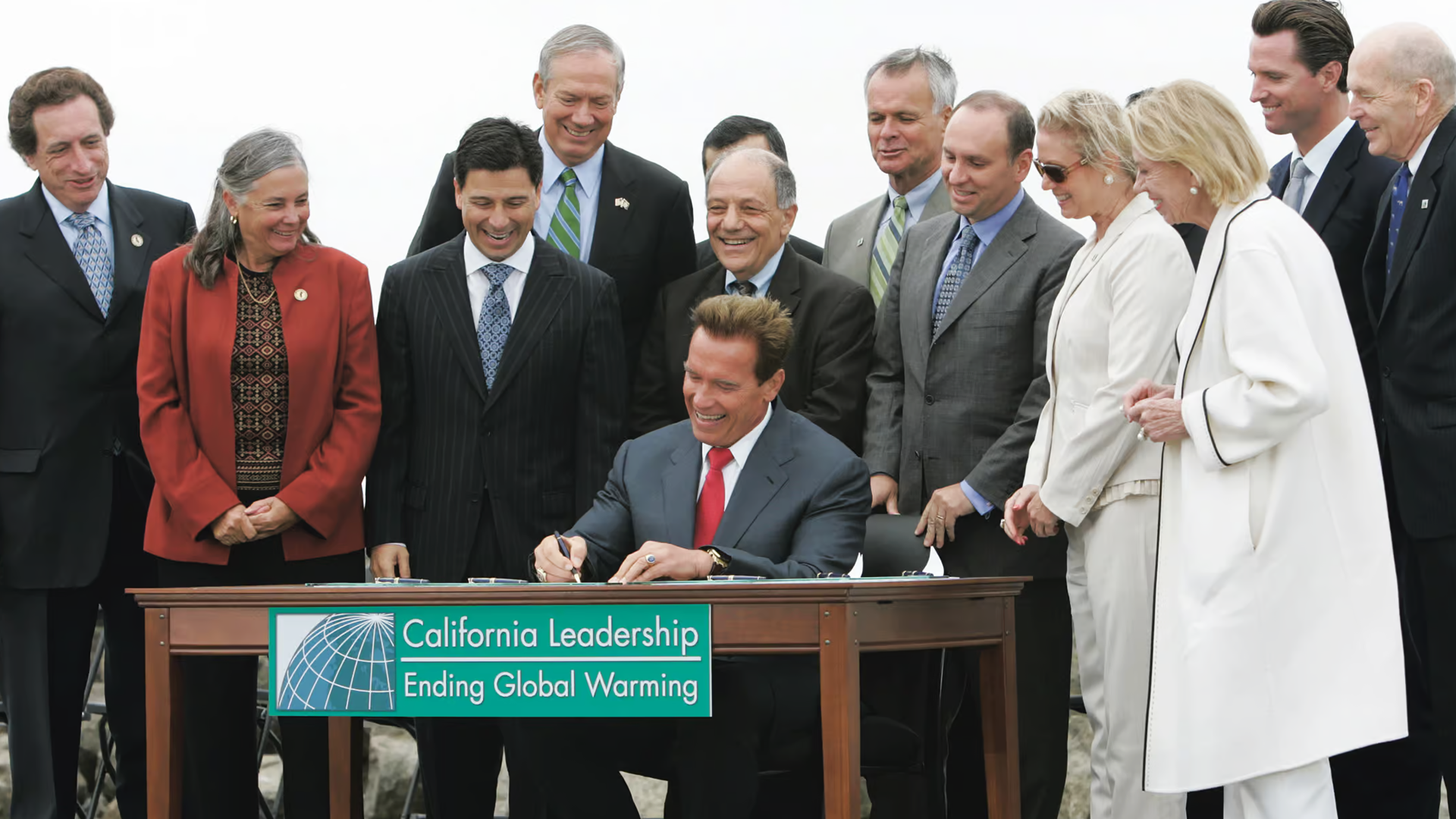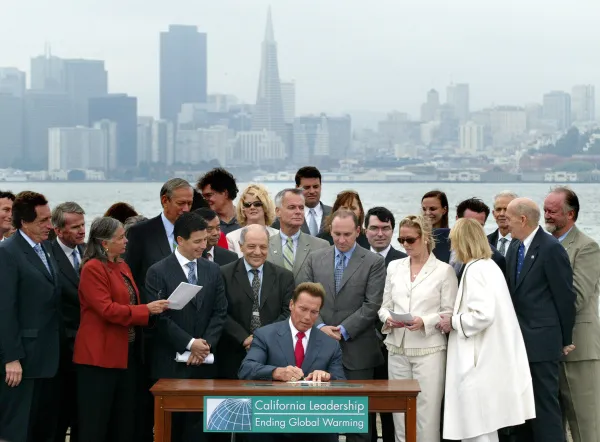California Passes Global Warming Solutions Act

California State Capitol in Sacramento, where lawmakers passed AB 32, the nation’s first comprehensive climate law.
What Happened?
In the mid-2000s, climate change was still a politically charged subject, but California decided to lead where the federal government stalled. The Global Warming Solutions Act (AB 32) passed the Senate on August 30, 2006, before being signed into law the following month by Governor Arnold Schwarzenegger. The law required statewide greenhouse gas emissions to return to 1990 levels by 2020—a roughly 25 percent cut from business-as-usual projections.
California’s Air Resources Board (CARB) was tasked with writing the rules: developing a Scoping Plan, regulating industry, requiring emissions reporting, and creating early action measures. AB 32 also laid the groundwork for the state’s Cap-and-Trade program, a market-based system to gradually ratchet down emissions while encouraging innovation.
The law passed thanks to an unusual political alliance: a Republican governor known for his Hollywood Hummer image and a Democratic-controlled legislature determined to push bold climate policy. Together they created the nation’s first comprehensive climate law, aiming not only to reduce greenhouse gases but also to grow a green economy, improve air quality, and address public health concerns.
The goals of AB 32 were ambitious. By aligning state policy with international benchmarks like the Kyoto Protocol, California positioned itself as both a laboratory and a battleground for climate action. Its implementation required cooperation across sectors: transportation, electricity, agriculture, waste, and manufacturing.
Opposition was fierce. The Bush administration and the auto industry fought California’s tougher fuel efficiency standards, claiming they conflicted with federal law. Yet California persisted, and its policies often became templates for national and international action.
Since AB 32’s passage, California has expanded its climate portfolio: adopting renewable energy mandates, setting zero-emission vehicle goals, and most recently announcing a ban on new gas-powered car sales by 2035. The 2006 law marked the start of a long-term transition toward a low-carbon future.
Why It Matters
AB 32 was a watershed moment in U.S. environmental history. It showed that a single state, representing 10 percent of the nation’s auto market, could bend policy and industry toward climate action—even in the face of federal resistance. By enshrining emissions caps in law, California not only addressed its own smog and public health crises but also charted a path for national climate policy. The act reminds us that transformative change often starts locally—and that the fight against climate change requires courage, innovation, and persistence.
?
Why did California take the lead on climate action while the federal government resisted stronger regulation?
How did Governor Arnold Schwarzenegger’s political role help pass AB 32?
What is Cap-and-Trade, and how did AB 32 lay the groundwork for its adoption in California?
How have California’s climate policies influenced national and international climate action?
What industries and communities in California were most affected by AB 32’s requirements?
Dig Deeper
California is known for leading the country in environmental laws and climate policies, setting emission standards that push beyond federal requirements.
Related

Climate Science: How Our Planet Keeps Its Cool… and Why It’s Getting Hotter
Climate science helps us understand how the planet stays warm, why it's getting warmer, and what we can do about it.

Powering the Future: Energy and Renewable Solutions
From sunbeams to spinning turbines, renewable energy is shaping our planet’s future. Learn how energy works, where it comes from, and how engineers are helping build a cleaner, brighter tomorrow.

McCarthyism: Fear, Power, and the Red Scare
In the 1950s, fear of communism gripped America. Senator Joseph McCarthy fueled this fear by accusing hundreds of people of being communist traitors—often without proof. The result was a national panic that tested the meaning of truth, justice, and freedom.
Further Reading
Stay curious!
